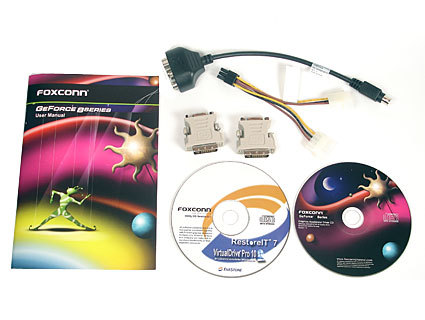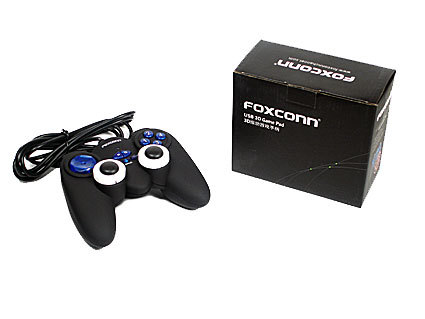Performance Value For DX10
Foxconn 8800GTS ONOC 320 MB
The core of a stock GeForce 8800GTS operates at a frequency of 500 MHz. The core of the overclocked Foxconn 8800GTS 320 MB runs at 575 MHz, 15% faster than a standard GTS, and actually as fast as a standard GTX core. The memory modules are running 100 MHz higher at 900 MHz for an effective 1.80 GHz DDR frequency (versus a stock GTS at 800 MHz or 1.60 GHZ DDR).
Although the memory and core clocks are the same as a standard GTX, the shader core is not. Like the 640 MB card from Foxconn, the shader core was not increased; 96 streaming processors need much higher frequencies to try to match the output of 128 in a GTX. We would have liked to see these frequencies increased - other competitors, such as EVGA and BFG, have raised their shader frequencies.
While Foxconn might leave a little on the table in terms of shader clocks, the card has some nice extras included in the box that are worth taking a look at. It comes with a video out cable that includes connections for S-Video, HD (Y, Pb, Pr), and composite video. Two DVI to D-Sub adapters allow for analog monitor support, as well as a 4-pin to 6-pin power adapter to work with older power supplies.
The graphics card employs the standard cooling solution that most manufacturers are using: the Nvidia reference design cooler. The card ran without issues during all of the tests, and the cooler should be sufficient to cool the card at its higher frequencies during regular game play. In case something goes wrong, Foxconn provides a 3-year warranty from the date of purchase.
Foxconn continues to bundle several other extras with its card, such as a USB game pad and two pieces of bundled software from FarStone. RestorIT 7 is system backup and recovery software that supports file and system level recovery options, as well as support for RAID 0 and 1. VirtualDrive Pro 10 is a disc drive emulation program that allows users to make images of their CD/DVDs and run them virtually without the physical disc. The program also allows burning new images in a virtual multi-disc operation mode that allows up to 23 virtual drives to be running at the same time.
Get Tom's Hardware's best news and in-depth reviews, straight to your inbox.
Current page: Foxconn 8800GTS ONOC 320 MB
Prev Page The Fight For The Middle Is About To Begin Next Page Test Setup

